337. The Bootes constellation came around *215 (Arcturus) - *88 (Betelgeuze) = *127 days after Orion. Virgo between Corvus (low down) and Bootes (high up) was not visible in the South American star map:
From Betelgeuze to Regulus (*152) there were *64 right ascension days and from Regulus to Arcturus there were *63 nights.
| Betelgeuze |
63 |
Regulus |
62 |
Arcturus |
| 07° 24′ N |
12° 13′ N |
19° 27′ N |
| *88 |
*152 |
*215 |
| 128 = 4 * 32 = 65 days + 9 weeks |
| 6-2 (153) |
14 |
6-17 (168) |
6-18 |
6-19 |
| JUNE 17 (168) |
JULY 2 |
3 (*104) |
4 (185) |
 |
 |
 |
 |
| Ga4-5 (88) |
Ga4-20 |
Ga4-21 (104 = 182 - 78) |
Ga4-22 |
|
Al Jabhah-8 (The Forehead) / Maghā-10 (Bountiful) / Sharru-14 (King)
10h (152.2)
AL JABHAH = η Leonis (152.4), REGULUS = α Leonis (152.7) |
11h (167.4)
χ Leonis, χ¹ Hydrae (167.1), χ² Hydrae (167.3) |
AL SHARAS (The Ribs) = β Crateris (168.6) |
Al Zubrah-9 (The Mane) / Purva Phalguni-11 (First Reddish One)
ZOSMA (Girdle) = δ Leonis (169.2), COXA (Hips) = θ Leonis (169.4) |
| Aug 20 (232) |
Sept 4 |
5 (248 = 104 + 144) |
6 |
| °Aug 16 (*148) |
°Aug 31 |
°Sept 1 (244) |
2 |
| 'July 24 (*125) |
'Aug 8 (*140) |
9 |
10 (222) |
| Anakena 10 (191) |
"July 25 (*126) |
26 (207) |
27 (288 - 80) |
|
... They took their provisions with them, carrying them on their shoulders, went on, and reached Te Pou. They made camp and slept in Te Pou on the tenth day of the month of July ('Anakena').
| [E:22] he amoamo he oho he tuu ki te pou he noho |
| he moe i te pou.i te angahuru o te raa.ko te |
| anakena. |
Amo. To carry on one's shoulders: O Yetú i-amo-ai te tatauró ki ruga ki-te maúga Kalvario. Jesus carried his cross up to the Calvary. Amoga, bundle; to tie in a bundle: he-amoga i te hukahuka, to tie a bundle of wood. Vanaga. 1. A yoke, to carry; amoga, burden, load. 2. To bend, to beat a path. Churchill. Âmo. 1. To clean, to clean oneself: he-âmo i te umu, to clean the earth oven; ka-âmo te hare, ka haka-maitaki, clean the house, make it good; he-âmo i te ariga, to clean one's face wetting it with one's hand. 2. Clear; ku-âmo-á te ragi, the sky is clear. 3. To slip, to slide, to glide (see pei-âmo). Ámoámo, to lick up, to lap up, to dry; to slap one's body dry (after swimming or bathing): he-âmoâmo i te vaihai rima. Vanaga. Amoamo. 1. To feed, to graze. 2. To spread, to stretch (used of keete). Churchill.
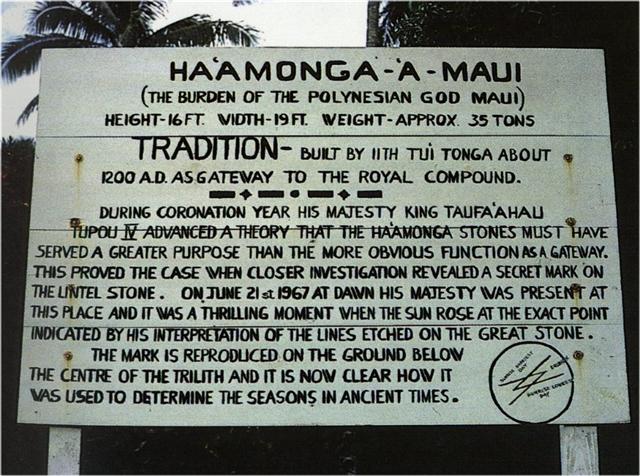
|
From JULY 3 (184) - at Al Sharas (*168) - to Corvus (Alchita, *183) there were 15 nights, and 184 + 15 = 199 (JULY 18) was corresponding to 7-3 (184 = 199 - 15). This had anciently been at the end of high summer where the last part of the Red Bird turned down:
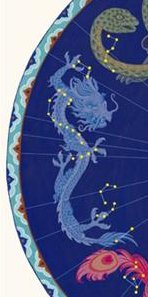
| 96 = 3 * 32 |
32 |
| Betelgeuze |
63 |
Regulus |
30 |
Alchita |
31 |
Arcturus |
| 07° 24′ N |
12° 13′ N |
24° 27′ S |
19° 27′ N |
| *88 |
*152 |
*183 |
*215 = *152 + *63 |
| 128 = 65 days + 9 weeks |
Al Sharas (*168) - where Regulus returned to visibility - ought once upon a time to have corresponded to where Kuukuu was mortally wounded by the Turtle:
... They all sat down and rested [on the plain of Oromanga], when suddenly they saw that a turtle had reached the shore and had crawled up on the beach. He [Ira] looked at it and said, 'Hey, you! The turtle has come on land!' He said, 'Let's go! Let's go back to the shore.' They all went to pick up the turtle. Ira was the first one to try to lift the turtle - but she didn't move. Then Raparenga said, 'You do not have the necessary ability. Get out of my way so that I can have a try!' Raparenga stepped up and tried to lift the turtle - but Raparenga could not move her. Now you spoke, Kuukuu: 'You don't have the necessary ability, but I shall move this turtle. Get out of my way!' Kuukuu stepped up, picked up the turtle, using all his strength. After he had lifted the turtle a little bit, he pushed her up farther. No sooner had he pushed her up and lifted her completely off the ground when she struck Kuukuu with one fin. She struck downward and broke Kuukuu's spine.The turtle got up, went back into the (sea) water, and swam away. All the kinsmen spoke to you (i.e. Kuukuu): 'Even you did not prevail against the turtle!'
They put the injured Kuukuu on a stretcher and carried him inland. They prepared a soft bed for him in the cave and let him rest there. They stayed there, rested, and lamented the severely injured Kuukuu. Kuukuu said, 'Promise me, my friends, that you will not abandon me!' They all replied, 'We could never abandon you!' They stayed there twenty-seven days in Oromanga. Everytime Kuukuu asked, 'Where are you, friends?' they immediately replied in one voice, 'Here we are!' They all sat down and thought. They had an idea and Ira spoke, 'Hey, you! Bring the round stones (from the shore) and pile them into six heaps of stones!' One of the youths said to Ira, 'Why do we want heaps of stone?' Ira replied, 'So that we can all ask the stones to do something.' They took (the material) for the stone heaps (pipi horeko) and piled up six heaps of stone at the outer edge of the cave. Then they all said to the stone heaps, 'Whenever he calls, whenever he calls for us, let your voices rush (to him) instead of the six (of us) (i.e., the six stone heaps are supposed to be substitutes for the youths). They all drew back to profit (from the deception) (? ki honui) and listened. A short while later, Kuukuu called. As soon as he had asked, 'Where are you?' the voices of the stone heaps replied, 'Here we are!' All (the youths) said, 'Hey, you! That was well done!' ...
... I have guessed place names on Easter Island were iterated in Manuscript E at their correct positions as determined by the Full Moon - whose face was reflecting the positions of the Sun half a year away (i.e. among the heliacal stars):
|
NAKSHATRA DATES: |
|
5 |
HANGA HOONU |
DEC 26 (360) - 30 (364) |
|
27 |
OROMANGA |
DEC 31 (365) - JAN 26 (391) |
|
5 |
PAPA O PEA |
JAN 27 (392) - 31 (396) |
| CLOSE TO THE SUN: |
13 |
| 6-13 (164) |
6-14 (180 - 15) |
6-15 |
6-16 |
| JUNE 28 |
29 (180) |
SIRIUS |
JULY 1 (*102) |
 |
 |
 |
 |
| (100) Ga4-16 |
Ga4-17 (100) |
Ga4-18 |
Ga4-19 |
| ν Hydrae (163.1) |
no star listed (164)
ALTAIR (α Aquilae)
|
Wings-27 (Snake)
η Oct. (165.4), ALKES (Shallow Basin) = α Crateris (165.6) |
ANA-TIPU-4 (Upper-side-pillar - where the guards stood) MERAK (Loin) = β Ursae Majoris (166.2), DUBHE (Bear) = α Ursae Majoris (166.7) |
| Aug 31 |
Sept 1 |
2 (*165) |
3 (246) |
| °Aug 27 |
28 |
29 (*161) |
30 (242) |
| 'Aug 4 (216) |
5 (*137) |
6 |
7 |
| "July 21 |
22 / 7 → π |
Anakena 23 (191 + 13) |
24 (*125) |
|
... Everywhere the dream soul looked around for a residence for the king. The dream soul went to Maunga Teatea and gave him the name Maunga Teatea A Hau Maka O Hiva. The dream soul of Hau Maka looked around. From Maunga Teatea she looked to Rangi Meamea (i.e., Ovahe).
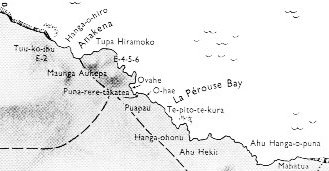
The dream soul spoke the following: There it is - ho! - the place - ho! - for the king - ho! - to live (there in the future), for this is (indeed) Rangi Meamea ...
... The Explorers arrived at Rangi Meamea in "July 23 (Anakena 23) and there they stayed on the beautiful beach of Oromanga for 27 days ...
... When Hotu's canoe had reached Taharoa, the vaginal fluid (of Hotu's pregnant wife) appeared. They sailed towards Hanga Hoonu [Bay of Turtles], where the mucus (kovare seems to refer to the amniotic sac in this case) appeared. They sailed on and came to Rangi Meamea, where the amniotic fluid ran out and the conctractions began. They anchored the canoe in the front part of the bay, in Hanga Rau. The canoe of Ava Rei Pua also arrived and anchoraged. After Hotu's canoe had anchoraged, the child of Vakai and Hotu appeared. It was Tuu Maheke, son of Hotu, a boy. After the canoe of Ava Rei Pua had also arrived and anchoraged, the child of Ava Rei Pua was born. It was a girl named Ava Rei Pua Poki ... |
| CLOSE TO THE FULL MOON: |
| 12-13 |
12-14 (348) |
12-15 |
12-16 (365 - 15) |
| DEC 28 |
29 |
30 (364) |
31 (*285) |
| HANGA HOONU |
OROMANGA |
| ι Cephei (346.0), λ Aquarii, γ Piscis Austrini, σ Pegasi (346.5) |
SCHEAT AQUARII = δ Aquarii (347.0), ρ Pegasi (347.2), δ Piscis Austrini (347.4), FOMALHAUT (Mouth of the Fish) = α Piscis Austrini, τ Gruis (347.8) *306 = *347.4 - *41.4 |
FUM AL SAMAKAH (Mouth of the Fish) = β Piscium (348.3), ζ Gruis (348.5), ο Andromedae (348.9) |
Al Fargh al Mukdim-24 (Fore Spout) / Purva Bhādrapadā-26 (First of the Blessed Feet) / House-13 (Pig) SCHEAT PEGASI = β Pegasi, π Piscis Austrini (349.3), κ Gruis (349.4), MARKAB PEGASI = α Pegasi (349.5)
*308 = *349.4 - *41.4 |
| March 2 |
3 |
4 (*348) |
5 (64) |
| °Febr 26 |
27 |
28 (*344) |
°March 1 (60) |
| 'Febr 3 |
4 |
5 (36) |
6 (*322) |
| "Jan 20 |
Tua Haro 21 |
22 |
23 (*308) |
| CLOSE TO THE SUN: |
7 |
| 6-30 SIRIUS (true heliacal) |
7-1 |
7-2 |
7-3 (184 = 199 - 15) |
| JULY 15 (196 = 181 + 15) |
SIRIUS (apparent heliacal) |
17 (*118 = 4 * 29½) |
18 (199) |
 |
 |
 |
 |
| Ga5-6 |
(118) Ga5-7 |
Ga5-8 (118) |
Ga5-9 |
| no star listed (180) |
π Virginis (181.0), θ Crucis (181.5) |
12h (182.6)
ο Virginis (182.1), η Crucis (182.5) |
ALCHITA (The Southern Tent) = α Corvi, MA WEI (Tail of the Horse) = δ Centauri (183.1), MINKAR (Beak) = ε Corvi (183.7), ρ Centauri (183.9) |
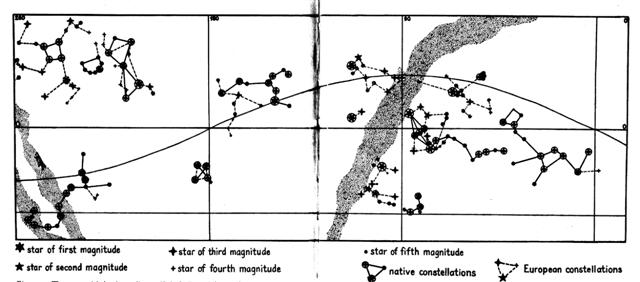 |
| Sept 17 (260 = 79 + 181) |
18 (*181 = 118 + 63) |
19 |
20 |
| °Sept 13 |
14 (*177) |
15 |
16 |
| 'Aug 21 (*153) |
22 |
23 |
24 (236) |
| "Aug 7 (*139) |
Hora Iti 8 |
9 |
10 (222) |
| CLOSE TO THE FULL MOON: |
| 12-30 (364) |
12-31 |
1-1 |
1-2 |
| JAN 14 |
15 (*300) |
16 (*118 + *183) |
17 (*366 - *64) |
| OROMANGA |
| DZANEB (Tail) = ω Piscium (362.4), γ² Oct. (362.8) |
η Tucanae (363.0), ψ Pegasi (363.1), 32 Piscium (363.2), π Phoenicis (363.4), ε Tucanae (363.6), τ Phoenicis (363.9) |
θ Oct. (364.4) |
Al Fargh al Thāni-25 (Rear Spout) 0h (365.25)
CAPH (Hand) = β Cassiopeiae, SIRRAH (Navel of the Horse) = α Andromedae (0.5), ε Phoenicis, γ³ Oct. (0.8) |
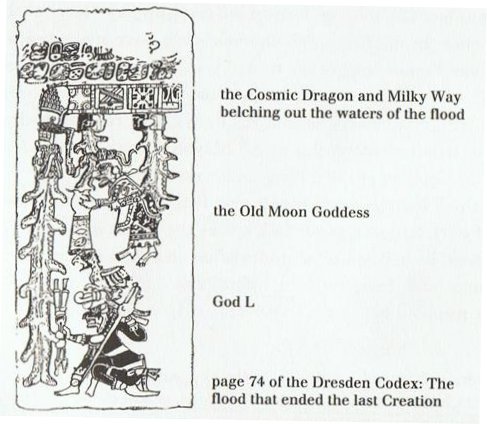 |
| March 18 (77) |
19 |
Equinox |
0h (*366) |
| 3-14 (73) |
°March 15 |
16 (*361) |
17 |
| 'Febr 19 (*336) |
20 |
21 |
22 (53) |
| "Febr 5 (*322) |
6 |
Tehetu'upú 7 (403) |
8 (39) |
God L was evidently present here, at the Deluge (Spout) from clouds heavy with rain which ended the previous Creation; the god who wore an Owl (Muan) on his head (maybe later this bird became - pars pro toto - only a crown of feathers) and who had a crocodile, dragon, or similar, above:
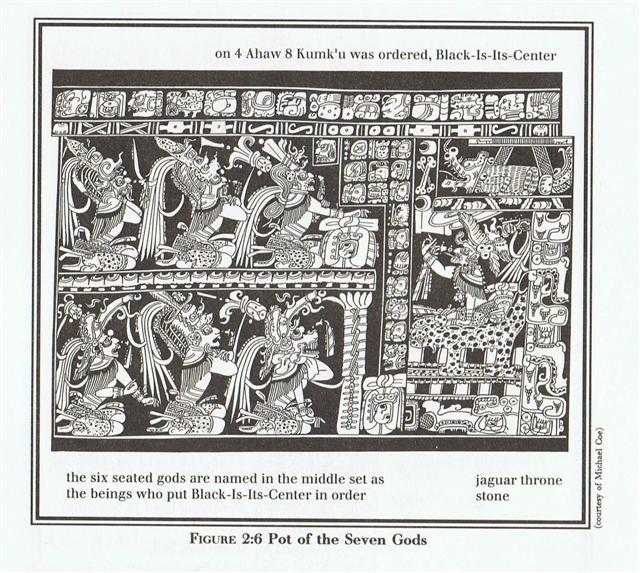
There were 6 Explorers sitting outside the cave of Kuukuu, but then they built 6 stone heaps - probably alluding to Tau-ono in the Pleiades - and went on to Papa O Pea.
| CLOSE TO THE SUN: |
| 7-11 (192) |
7-12 |
7-13 |
7-14 |
7-15 |
| JULY 26 |
27 |
28 |
29 (210) |
30 (*131) |
 |
 |
 |
 |
 |
| Ga5-17 |
Ga5-18 (128) |
Ga5-19 |
Ga5-20 |
Ga5-21 |
|
Al Áwwā'-11 (The Barker) / Shur-mahrū-shirū-18 (Front or West Shur)
Sombrero Galaxy = M104 Virginis (191.1), ρ Virginis (191.4), PORRIMA = γ Virginis, γ Centauri (191.5) |
ι Crucis (192.2), β Muscae (192.5), MIMOSA = β Crucis (192.9) |
no star listed (193) |
κ Crucis (194.4), ψ Virginis (194.5), μ Crucis, λ Crucis (194.6), ALIOTH (Fat Tail) = ε Ursae Majoris, ι Oct. (194.8) |
MINELAUVA = δ Virginis (195.1), COR CAROLI = α Canum Ven. (195.3) |
| Sept 28 |
29 (*192) |
30 (273) |
Oct 1 |
2 |
| °Sept 24 |
25 (*188) |
26 |
27 (270) |
28 |
| 'Sept 1 |
2 (*165) |
3 |
4 |
5 (248) |
| "Aug 18 (*150) |
19 (231) |
20 |
Hora Iti 21 |
22 |
| CLOSE TO THE FULL MOON: |
| 1-10 |
1-11 |
1-12 |
1-13 |
1-14 |
| JAN 25 |
26 |
27 (392) |
28 |
29 (*314) |
| OROMANGA |
PAPA O PEA |
|
... He (i.e., Ira) said, 'Let's go! We shall go to Papa O Pea'. They all got up and moved on. On the twentieth day of the month of August ('Hora Iti') they went to Papa O Pea. They all went and came to Papa O Pea, looked around in Papa O Pea, and gave the name 'Papa O Pea A Hau Maka'. They stayed five days in Papa O Pea ...
Pea. (Also peapea): To go away with bits of food or mud sticking to one's face or garments. Vanaga. Peaha, perhaps ... maybe, chance, doubtful; reoreo peaha ... Ma.: pea, perhaps. Peapea, an erasure ... hakapeapea ... Peau, to sweep all away. Ma.: peau, to be turned away. Churchill. Peau, a wave (Sa., To., Fu., Fotuna, Niuē, Mq., Nuguria); Mgv.: peau, peahu, id. Churchill 2.
... But in the fullness of time an obscure instinct led the eldest of them towards the anthill which had been occupied by the Nummo. He wore on his head a head-dress and to protect him from the sun, the wooden bowl he used for his food. He put his two feet into the opening of the anthill, that is of the earth's womb, and sank in slowly as if for a parturition a tergo. The whole of him thus entered into the earth, and his head itself disappeared. But he left on the ground, as evidence of his passage into that world, the bowl which had caught on the edges of the opening. All that remained on the anthill was the round wooden bowl, still bearing traces of the food and the finger-prints of its vanished owner, symbol of his body and of his human nature, as, in the animal world, is the skin which a reptile has shed ... |
| ξ Phoenicis (9.0), ρ Tucanae (9.1), DENEB KAITOS (Tail of the Sea Beast) = β Ceti, η Phoenicis (9.4), AL NITHĀM (String of Pearls) = φ¹ Ceti (9.6) |
ACHIRD (Woman with Luminous Rays) = η Cassiopeiae (10.7) |
Legs-15 (Wolf)
ν Andromedae (11.0), φ² Ceti (11.1), ρ Phoenicis (11.2), η Andromedae (11.4) |
CIH (Whip) = γ Cassiopeiae, λ Tucanae (12.4), φ³ Ceti (12.6), μ Andromedae (12.8)
*12.4 + *365 -*41.4 = *336 (= 4 * 84) |
φ4 Ceti (13.2) |
| March 30 |
31 (*375) |
April 1 (91) |
2 |
3 |
| °March 26 |
27 |
28 (*372) |
29 (88) |
30 |
| 'March 3 |
4 |
5 (64) |
6 (*350) |
7 |
| "Febr 17 |
18 |
19 (50) |
20 (*336) |
Tehetu'upú 21 |
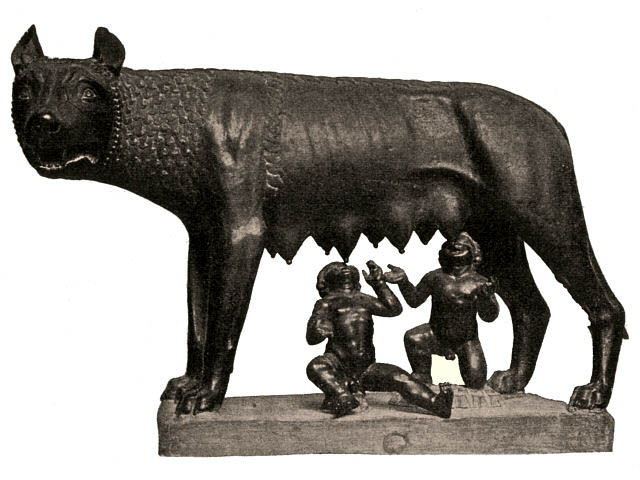 |
| CLOSE TO THE SUN: |
| 7-16 |
7-17 |
7-18 |
7-19 (200) |
7-20 |
7-21 |
7-22 → π |
| JULY 31 |
AUG 1 |
2 (214) |
(*135 = 500 - 365) |
4 (*136) |
5 |
6 |
 |
 |
 |
 |
 |
 |
 |
| Ga5-22 |
Ga5-23 |
Ga5-24 |
Ga5-25 (135) |
Ga5-26 |
Ga5-27 (→ 364) |
Ga5-28 |
| δ Muscae (196.5) , VINDEMIATRIX (Grape Gatherer) = ε Virginis (196.8) |
13h (197.8)
ξ¹ Centauri (197.1), ξ² Centauri (197.9) |
APAMI-ATSA (Child of Waters) = θ Virginis, ψ Hydrae (198.5), DIADEM = α Com. Ber. (198.9) |
AL DAFĪRAH (Tuft) = β Com. Ber. (199.4) |
σ Virginis (200.4) |
γ Hydrae (201.0), ι Centauri (201.4) |
Al Simāk-12 (Lofty) / Chitra-14 (Bright One) / Horn-1 (Crocodile) / Sa-Sha-Shirū-20 (Virgin's Girdle) / ANA-ROTO-3 (Middle pillar)
MIZAR = ζ Ursae Majoris (202.4), SPICA = α Virginis, ALCOR = 80 Ursae Majoris (202.7)
SADALMELIK (α Aquarii)
*161 = *202.4 - 41.4 |
| Oct 3 |
4 (277) |
5 |
6 |
7 (*200) |
8 |
9 (282) |
| °Sept 29 |
30 |
°Oct 1 |
2 (275) |
3 (*196) |
4 |
5 |
| 'Sept 6 |
7 (250) |
8 |
9 |
10 |
11 |
12 (*175) |
| "Aug 23 |
24 (236) |
25 |
Hora Iti 26 |
27 |
28 |
Hora Iti 29 |
|
Ahu. 1. Funerary monument with niches holding the skeletons of the dead. 2. Generic term for a grave, a tomb merely enclosed with stones. 3. Stone platform, with or without graves. 4. Elevated seat, throne. 5. Swollen; to swell up: ku-ahu-á tooku va'e, my foot is swollen; ananake te raá e-tagi-era te ûka riva mo toona matu'a ka-ahu ahu-ró te mata, every day the daughter cried for her parents until her eyes were quite swollen. Vanaga.
1. To transfer, to transplant, to take up by the roots. 2. To puff up, to swell, a swelling, protuberance; gutu ahu, swollen lips; ahuahu, to swell, plump, elephantiasis, dropsy; ahuahu pupuhi, amplitude; manava ahuahu, indigestion. 3. Paralysis. 4. A carved god of dancing, brought forth only on rare occasions and held of great potency. Ahuahu, inflammation. Ahukarukaru (ahu 2 - karukaru), dropsy. Churchill. |
Ahu Akapu (2 days) |
Aka. 1. Anchor: he-hoa te aka, to drop anchor. 2. Root of certain plants (banana tree, taro, sugar-cane). 3. To be paralyzed by surprise. Vanaga.
1. Root; aka totoro, to take root. P Pau., Mq.: aka, root. Ta.: aa, id. 2. (āka) anchor. 3. Causative (haka). Churchill. |
Pu Pakakina
(1 month) |
| CLOSE TO THE FULL MOON: |
| 1-15 |
1-16 |
1-17 |
1-18 |
1-19 (384) |
1-20 |
1-21 |
| JAN 30 |
31 (396) |
FEBR 1 (32) |
2 |
3 |
4 (*320) |
5 (36) |
| PAPA O PEA |
Al Batn Al Hūt-26 (Belly of the Fish) / Revati-28 (Prosperous) / 1-iku (Field Measure)
MIRACH (Girdle) = β Andromedae, KEUN MAN MUN (Camp's South Gate) = φ Andromedae (16.0), ANUNITUM = τ Piscium (16.5), REVATI (Abundant) = ζ Piscium (16.9)
REGULUS (α Leonis)
|
... On the twenty-sixth day of the month of August ('Hora Iti') they went from Papa O Pea to Ahu Akapu. They all went and reached Ahu Akapu. They looked around and gave the name 'Ahu Akapu A Hau Maka'. They also saw (all of) Te Pito O Te Kainga, looked around, and gave (the whole island) the name 'Te Pito O Te Kainga A Hau Maka'. [E:31] They made camp and rested at Ahu Akapu for two days. On the twenty-ninth day of the month of August ('Hora Iti') they went to Pu Pakakina. They arrived, remained there, and gave the name 'Pu Pakakina A Ira'. They remained one month in Pu Pakakina. |
| no star listed (14) |
1h (15.2)
β Phoenicis (15.1), υ Phoenicis, ι Tu canae (15.6), η Ceti, ζ Phoenicis (15.7) |
ν Phoenicis (17.4), κ Tucanae (17.6) |
no star listed (18) |
ADHIL (Garment's Train) = ξ Andromedae (19.3), θ Ceti (19.7) |
KSORA (Knee) = δ Cassiopeiae (20.1), ω Andromedae (20.6), γ Phoenicis (20.8) |
| April 4 |
5 (460 = 396 + 64) |
6 |
7 |
8 (13 * 29½ - ½) |
9 (*384) |
10 (100) |
| °March 31 |
°April 1 (91) |
2 (*377) |
3 |
4 |
5 (460 = 396 + 64) |
6 (*16) |
| 'March 8 |
9 |
10 (*354) |
11 |
12 |
13 (72) |
14 → π |
| Tehetu'upú 22 |
TERMINALIA |
"Febr 24 (420) |
25 |
26 |
27 (*7 * 7 * 7) |
28 (59) |
|
... The leap day was introduced as part of the Julian reform. The day following the Terminalia (February 23) was doubled, forming the bis sextum - literally 'double sixth', since February 24 was 'the sixth day before the Kalends of March' using Roman inclusive counting (March 1 was the 'first day'). Although exceptions exist, the first day of the bis sextum (February 24) was usually regarded as the intercalated or 'bissextile' day since the third century. February 29 came to be regarded as the leap day when the Roman system of numbering days was replaced by sequential numbering in the late Middle Ages ... |
 |
116 |
 |
354 |
| Ga1-23 |
Ga5-30 (140) |
| *87 |
*204 |
| 118 = 472 / 4 = 378 - 260 = 398 - 280 |
| CLOSE TO THE SUN: |
| 7-23 (204) |
7-24 (*125) |
| AUG 7 (219) |
8 (*140) |
 |
 |
| Ga5-29 |
Ga5-30 (140) |
| 71 VIRGINIS (203.6) |
no star listed (204) |
|
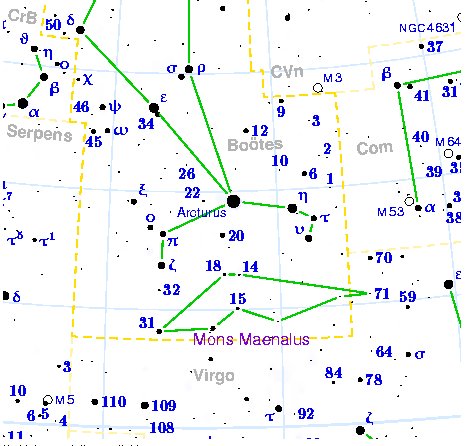
... Mons Maenalus, at the feet of Boötes, was formed by Hevelius, and published in his Firmamentum Sobiescianum; this title coinciding with those of neighboring stellar groups bearing Arcadian names. It is sometimes, although incorrectly, given as Mons Menelaus, - perhaps, as Smyth suggested, after the Alexandrian astronomer referred to by Ptolemy and Plutarch. The Germans know it as the Berg Menalus; and the Italians as Menalo. Landseer has a striking representation of the Husbandsman, as he styles Boötes, with sickle and staff, standing on this constellation figure. A possible explanation of its origin may be found in what Hewitt writes in his Essays on the Ruling Races of Prehistoric Times:
The Sun-god thence climbed up the mother-mountain of the Kushika race as the constellation Hercules, who is depicted in the old traditional pictorial astronomy as climbing painfully up the hill to reach the constellation of the Tortoise, now called Lyra, and thus attain the polar star Vega, which was the polar star from 10000 to 8000 B.C.
May not this modern companion constellation, Mons Maenalus, be from a recollection of this early Hindu conception of our Hercules transferred to the adjacent Bootes? |
| Oct 10 (*203) |
11 (284) |
| °Oct 6 (*199) |
7 (280) |
| 'Sept 13 (256 = 8 * 32) |
14 (*177 = 6 * 29½) |
| "Aug 30 (242 = 471 - 229) |
Hora Iti 31 (*163) |
| Pu Pakakina |
| CLOSE TO THE FULL MOON: |
| 1-22 |
1-23 (388 = 284 + 104) |
| FEBR 6 (*322) |
7 (403) |
| δ Phoenicis (21.5) |
υ Andromedae (22.9) |
| April 11 (101 = 466 - 365) |
12 (*387 = *22 + 365) |
| °April 7 (97 = 462 - 365) |
8 (*383) |
|
'March 15 (74) |
16 (*360 = *387 - *27) |
| "March 1 (60) |
Tarahao 2 (*346 = *387 - *41) |
... Ira said the following to Makoi: You are the one who shall stay here. We, on the other hand, have to turn around. Makoi replied, All right with me!
This was revealed to Makoi as soon as Ira had placed Hinariru in the middle with Ruhi to the right and Pu to the left:
... On the twenty-sixth day of the month of August ('Hora Iti') they went from Papa O Pea to Ahu Akapu. They all went and reached Ahu Akapu. They looked around and gave the name 'Ahu Akapu A Hau Maka'. They also saw (all of) Te Pito O Te Kainga, looked around, and gave (the whole island) the name 'Te Pito O Te Kainga A Hau Maka'. [E:31] They made camp and rested at Ahu Akapu for two days. On the twenty-ninth day of the month of August ('Hora Iti') they went to Pu Pakakina. They arrived, remained there, and gave the name 'Pu Pakakina A Ira'. They remained one month in Pu Pakakina.
|
[E:31] he noho he hakaora.i ahu akapu.erua raa |
They made camp and rested at Ahu Akapu for two days. |
|
i te angahuru te maiva. o te raa o hora iti |
On the twenty-ninth day of the month of August ('Hora Iti') |
|
Hagahuru. Ten (agahuru, hagauru). P Mq.: onohuú, okohuú, id. Ta.: ahuru. id. Churchill. The Maori recognized two main divisions of the year: winter or takurua, a name for Sirius which then shone as morning star, and summer, raumati or o-rongo-nui, 'of the great Rongo', god of agriculture. They occasionally recognized spring as the digging season koanga, from ko, the digging stick or spade. The autumn or harvest season was usually spoken of as ngahuru, 'tenth' (month), although it was considered to include also the last two months of the year. Mahuru was the personification of spring. Makemson.
The word maiva could possibly be mai-iva, where mai = sick and iva = 9, in a way possibly implying the day which was number 10 (hangahuru) + mai(i)va = 29. When the Sun was in August (Hora Iti) then the Full Moon (Hotu) was in February and there was no day 29 in Tehetu'upú. Furthermore, Tehetu'upú 9 (40) could have been alluded to (2-9) because in Roman times this would have been day 40 + 14 = 54 ('February 23 = Terminalia). The Full Moon was in Tehetu'upú 28 (= 9 + 19) when the Sun reached the 'plumb line' between the Fox and Spica.
... There is a further motivation of the same in the kava taken immediately after the chief's by the herald, a representative of the land. This drinking is 'to kick', rabeta, the chief's kava. Raberabe, the same reduplicated version, means 'a sickness', the result of kicking accidently against a 'drau-ni-kau'... The herald here takes the effects on himself: drau-ni-kau is the common name for 'sorcery'... |
|
i oho ai ki pu pakakina.he tuu he noho he na(-) |
they went to Pu Pakakina. They arrived, remained there, and gave |
|
pe i te ingoa ko pu pakakina.a Ira.he noho |
the name 'Pu Pakakina A Ira'. They remained |
|
etahi marama.i pu pakakina. |
one month in Pu Pakakina. |
|
he ki a Ira.kia Raparenga.kia Nonoma to(-) |
Ira said to Raparenga and Nonoma, |
|
koa.ka oho korua hokorua ki hanga te Pa(-) |
Go to Hanga Te Pau, you two companions, |
|
u.ka too mai i te makoi.he ki hokoou a Ira. |
and bring the Makoi back (wordplay on 'fruit of the tree' and 'name of the explorer'?). |
|
kia Raparenga.ana oho korua ana tuu |
Ira further said to Raparenga, When you have gone and arrived there, |
|
e too mai koe i to tau moenga raakau e moe |
take the treasure wrapped in our mat, which is lying |
|
Too. 1. To adopt, to take, to acquire, to admit, to accept, to gather, to dispose, to seize, to pull up, to extirpate, stripped, to withdraw, to intercept, to frustrate, to touch, to employ, to serve; tae too, to renounce. Mq.: too, to take, to receive, to accept, to adopt, to seize, to pull up. 2. Raa too, noon. 3. Numeral prefix. P Mgv.: toko, id. Mq.: toko, too, id. Ta.: too, id. Samoa and Futuna use to'a and toka, Tonga and Niuē use toko, and the remainder of Polynesia uses the latter form. Tooa: kai tooa, intact, entire, whole; paea tooa, to deprive. Churchill.
Moe. To sleep, to lie at full length, to dream, to brood, to place, to cohabit; moe atu, to leave off, to desist; moe atu ra, to adjourn, to postpone; moe hakahepo, to talk in the deep; moe aherepo, somnambulist, sleepwalker; moe hakataha, to sleep on the side; moe no, to oversleep, concubinage; moe tahae, to be a light sleeper; moe tahaga, a sleeper; moe vaeahatu, moe hakaroa, to sleep sprawling; rava moe, to sleep sound; ariga moe ki raro, to lie flat on the ground; tae moe, bachelor; hakamoe, to brood, to fold the wings; to reserve, to lay up; to struggle. P Pau.: moe, sleep. Mgv.: moe, sleep, to lie down, coitus, to shut the eyes. Mq.: moe, to sleep, to lie down; haámoe, to set down on the ground. Ta.: moe, to sleep, to lie down. Moea raruga, lying flat. Moeaivi, thin. Mq.: ivi, haáivi, id. Ta.: ivi, id. Moega, mat. Pau.: moehega, bed. Mgv.: moega, a sleeping mat. Mq.: moena, moeka, mat, floor cloth, bed. Ta.: moea, bed. Moemata, to sleep with the eyes open; mea moemata, phantom. Moemoea, a dream, vision; tikeahaga moemoea, apparition by night. T Mgv., Mq., Ta.: moemoea, dream. Churchill. Mgv. Moemoe, to steal, to purloin at a food distribution. Mq.: moemoe, to seize, to grasp. Churchill. Ta.: 1. Moemoe, ambush. Ha.: moemoe, id. 2. Moemoe, Phyllanthus simplex. To.: mohemohe, a tree. Churchill. Mq.: Moehu, exiled, banished, prisoner of war. Ma.: morehu, a survivor. Churchill.
Rakau. Raau, medicine, remedy, drug. Ra'a'u, scratch on the skin. Rakau, a plant. Râkau, goods, property. Vanaga. 1. Wood; rakau ta, cudgel, stick. P Pau.: rakau, tree, to dress a wound. Mgv.: rakau, wood, timber, a tree; medicine, a remedy; an object. Mq.: ákau, wood, tree. Ta.: raáu, id. 2. Medicine, remedy, potion, ointment, furniture, any precious object, resources, baggage, riches, heritage, dowry, merchandise, treasure, wealth; rakau hakaneinei, purgative; rakau nui, rich, opulent; rakau kore, poor, beggar, indigent, miserable, an inferior; hakakamikami ki te rakau, to impoverish; rakau o te miro, ballast. Mq.: akau, anything in general. The medicine sense is particularized in Tonga, Nukuoro, Hawaii, Tahiti, Mangareva, Paumotu. In no other speech does wood stand so fully for wealth of possessions, but it will be recalled that Rapanui is destitute of timber and depends wholly upon driftwood. Churchill. |
|
ena he mee koe e mataki a o tikea ro.e te |
there. Your job when you open it is to (make sure) that the |
|
P Pau.: mataki, shame.
Tikea. To see, to perceive, to examine, to find; (also: tikera). Vanaga. To see, to feel, to recognize, to perceive, to know, manifest, to appreciate; tikea mai, to appear, visible; tikea horahorau, to skim a book; tae tikea, unknown, invisible, misunderstand, unperceived, unheard; tikeahaga, science, a dream; hakatikea, to announce, to make known, to prove, to propose, to prejudice, to show, immodest; hakatikeahaga, instruction. Churchill.
Ro. 1. Of, concerning. 2. Yet, nevertheless, still; kakore ro, our; ka kikiu ro, to importune (? no). Churchill. |
|
kope erua.e roou koe ana mau mai. |
other fellow can't see you. Be very careful when you pick up (the treasure)! |
|
Kope. Lad, lass, youth, young man or woman; he-oho te kope ra'e Ko Ira, the first youth, Ko Ira, went; pehé korua ga kope? How are you, lads? Koho-mai korua ko ga kope, ka-maitaki korua ga kope! Welcome to you, lasses, what beautiful lasses you are! Kope tugutugu, youth T. Pau.: kope, string, filament. Ma.: kope, to bind in flax leaves. Churchill. |
|
he oho arurua. |
The two left, |
|
he tuu he too mai i te kai he hoki he oho mai |
arrived, took the provisions, turned around, went, and |
|
he tuu ki pu pakakina.he hakarere i te kai |
returned to Pu Pakakina and left the provisions there. |
|
he avai i te raakau o Ira.e Raparenga |
Raparenga handed over the treasure (raakau) of Ira. |
They stayed for one month in Pu Pakakina, and in Manuscript E much space was used for this raa-kau treasure:
| Kau. 1. To move one's feet (walking or swimming); ana oho koe, ana kau i te va'e, ka rava a me'e mo kai, if you go and move your feet, you'll get something to eat; kakau (or also kaukau), move yourself swimming. 2. To spread (of plants): ku-kau-áte kumara, the sweet potatoes have spread, have grown a lot. 3. To swarm, to mill around (of people): ku-kau-á te gagata i mu'a i tou hare, there's a crowd of people milling about in front of your house. 4. To flood (of water after the rain): ku-kau-á te vai haho, the water has flooded out (of a container such as a taheta). 5. To increase, to multiply: ku-kau-á te moa, the chickens have multiplied. 6. Wide, large: Rano Kau, 'Wide Crater' (name of the volcano in the southwest corner of the island). 7. Expression of admiration: kau-ké-ké! how big! hare kau-kéké! what a big house! tagata hakari kau-kéké! what a stout man! Vanaga. To bathe, to swim; hakakau, to make to swim. P Pau., Mgv., Mq.: kau, to swim. Ta.: áu, id. Kauhaga, swimming. Churchill. The stem kau does not appear independently in any language of Polynesian proper. For tree and for timber we have the composite lakau in various stages of transformation. But kau will also be found as an initial component of various tree names. It is in Viti that we first find it in free existence. In Melanesia this form is rare. It occurs as kau in Efaté, Sesake, Epi, Nguna, and perhaps may be preserved in Aneityum; as gau in Marina; as au in Motu and somewhere in the Solomon islands. The triplicity of the Efaté forms [kasu, kas, kau] suggests a possible transition. Kasu and kas are easy to be correlated, kasu and kau less easy. They might be linked by the assumption of a parent form kahu, from which each might derive. This would appear in modern Samoan as kau; but I have found it the rule that even the mildest aspirate in Proto-Samoan becoming extinct in modern Samoan is yet retained as aspiration in Nuclear Polynesia and as th in Viti, none of which mutations is found on this record. Churchill 2 |
[E:32] They stayed, and another day dawned. Then Ira said, Let's go! Let's go down to swim with the board, to ride the waves! They all got up, climbed down, and arrived. They took off cape and loincloth (he huni e te hami). Then they all hurried and mounted the topside of a plank. They climbed on it, moved it, and reached the islets (motu, here, 'cliffs off the shore'). They all formed a line and looked towards the waves. When the wave began to rise, when it began to move faster and faster, they all turned the lower part of their body (? tiaeve) and coasted on top of the wave toward the right side. Once they were underway (literally, 'when the turtle was gone'), their eyes looked toward the land at an angle. Ira called out with a loud voice, Our ride on the wave is to the right! (Fast) as on a sled was the ride on the wave, and it brought them to the shore. The place where they landed was given the name Hanga Roa.
They all turned around and went back (to the starting place out at sea). Then the ride on the waves went in the direction of the left side, and they landed in Apina Iti. [E:33] Again they all turned around and came back (to the starting point), and once again they rode in on the waves. They landed in Rio and gave the name Hanga O Rio.
They went on land, sat down, stretched out, and dried in the sun. Then they all went back again and arrived (out there), and once again they all rode on the waves toward the beach. Again and again (they did it). They went on land, turned around, and climbed up together to the cave Pu Pakakina. There they stayed.
The first day of swimming with the board (above) was perhaps in the first day after Hora Iti 29 ("August 29), the day when they went to Pu Pakakina A Ira. The last of the 5 turtle glyphs in line Ga5 was at Spica, Alcor, and Mizar. Possibly it meant the Explorers down on earth repeated what just had occurred up in the night sky.
[1] It grew light, and again Ira spoke. This is what he said: 'Turn around, all of you, and go down to ride the waves (literally, 'to the turtle, to act like a turtle').' Five of them went down; only Ira did not go down to let himself be carried on a board by a wave. After the young kinsmen had gone down to surf, Ira got up, picked up the mat with the treasure, unfolded the mat, pulled out the mother-of-pearl ornament (reipa), folded the mat again tightly, and left it on the ground. Ira got up, climbed up, went on, and reached Ruhi Hepii. He drilled a hole into the stone. After the hole was deep enough, he took the ornament (rei) and put it into the hole so that the shiny side (rapa) was turned outward. He gave the place the name 'Ruhi Hepii'. He turned around, climbed down, went on, and entered the cave Pu Pakakina. When he arrived there, he sat down. The young kinsmen arrived and rested.
[2] It grew light. On the second day, Ira said again, 'Go back to riding the waves!' They all went back out there. [In order to count this day as number 2 we cannot count the earlier mentioned 'another day dawned' as the same kind of day. Therefore 'another day dawned' could possibly refer to the 'dawn of the year'. This special 'day' is similar to the year before the first birthday. When a great cog in the wheel of time moves one step ahead all the smaller cogs should stand still.] Ira got up and again picked up the (second) ornament. He took it, went on, came to Apina Nui, drilled a hole into the stone, put the ornament in the hole, with the shiny side to the outside, and gave (the place) the name 'Pu'. He turned around, went on, and came to the cave Pu Pakakina. There he lay down. The young kinsmen arrived and also lay down.
[3] It grew light on the third day, and again Ira said, 'Go back to swimming on a board, to riding the waves!' All went back out there, and Ira got up. He picked up two stone figures (moai maea) and two mother-of-pearl necklaces (tuitui reipa). The name of the first stone figure was Apina Iti, and the second one was Rapa Kura. Ira took the figures and the ornaments, went on, and came to Apina Iti. He dug a pit, let the figure slide down into the pit, and covered it up with pebbles (kirikiri). The head remained completely free (? he puoko i hakapaka). He put the necklace around the neck of the figure and called the place 'Apina Iti A Rapa Kura'. Ira gave the stone figure [earlier named Apina Iti] the name 'Hinariru', the name of the master, (son) of Tuu Hokorua, who had given the figure to Ira. He turned around, went on, and entered the cave Pu Pakakina and remained there. All the young men arrived and settled down (to sleep).
[4] It grew light on the fourth day, and they all got up (together). They climbed down, went on, and arrived at the bay. They hurried, went into the water, and reached the islet (off the shore). The wave began to move, and they all rode the wave (literally, 'they turned their lower body into the position of a turtle'). Ira rode the waves toward the right side. He looked diagonally toward the land, looked in the direction of Ruhi Hepii, and the ornament of Ruhu Hepii shone brightly. [I suspected Ruhu was Barthel's misspelling of Ruhi and looked in the Polynesian original. To my surprise - I guess Barthel could have used Ruhu as a Sign - the original text seems to be: he ui mai a ruhi hepii he rapa atu te rei.mai ruhi hePii. Possibly we should read hePii as a reference to π.]
He went back out into the sea, and the movement of the wave was to the left side. Again he glanced, this time in the direction of Pu, and the ornament of Pu shone brightly. [Pu was the name of the place with a hole in the stone at Apina Nui. Maybe Pi(i) was meant to be the opposite of Pu, as when right is contrasted to left.] Again he went out into the sea. From the middle, the two necklaces around the neck of the two figurines shone (toward him). His ride on the wave ended in Rio, and therefore the name 'Hanga O Rio' was given. [There were 2 necklaces, but the story recounts only how one of them was used around the neck of the stone figure Apina Iti. The other stone figure was Rapa Kura and nothing is said if also this figure was buried up to her neck or not. Instead the name of the Apina Iti figure was strangely changed to Apina Iti A Rapa Kura. If Barthel has translated the story correct, then it contains puzzles to solve. Was the Apina Iti statue joined to the Rapa Kura statue when he got the necklace around his neck? But then the name changed again, this time to Hinariru, the son of Tuu Hokorua, where indeed the latter name is in harmony with my question - 'in a group of two'.] Ira remained on shore, pondered, and said, 'This is well done! Ruhi to the right, Pu to the left, and Hinariru Nui and Hinariru Iti in the middle.'
The name ruhi hePii could have alluded to the summer maid, in which case we can assume Pu (at Apina Nui) should represent the winter maid:
... Antares, visible in the morning sky of December-January, came to stand for summer heat; hence the saying, 'Rehua cooks (ripens) all fruit'. The generally accepted version of the Rehua myth, according to Best, is that Rehua had two wives, the stars on either side of Antares. One was Ruhi-te-rangi or Pekehawani, the personification of summer languor (ruhi), the other Whaka-onge-kai, She-who-makes-food-scarce before the new crops can be harvested ...
... Hamiora Pio once spoke as follows to the writer: 'Friend! Let me tell of the offspring of Tangaroa-akiukiu, whose two daughters were Hine-raumati (the Summer Maid - personified form of summer) and Hine-takurua (the Winter Maid - personification of winter), both of whom where taken to wife by the sun ... Now, these women had different homes. Hine-takurua lived with her elder Tangaroa (a sea being - origin and personified form of fish). Her labours were connected with Tangaroa - that is, with fish. Hine-raumati dwelt on land, where she cultivated food products, and attended to the taking of game and forest products, all such things connected with Tane ...
According to my interpretation the Explorers stayed for 27 days in Oromanga - from DECEMBER 31 (365) to JANUARY 26 (391) - and then they stayed for 5 days in Papa O Pea, i.e. from JANUARY 26 (391) to day 396 = JANUARY 31. Then they went from Papa O Pea in FEBRUARY 1 (32).
Although Manuscript E was referring to "August 26 (238) = AUGUST 3 (215 = 238 - 23) = 182 + 33 (FEBRUARY 2) it could be argued that number 237 (= 8 * 29½ + 1) was a day zero and that therefore the Explorers would take their first step away from the day-time place of Oromanga only when time in the darkness had been completely measured out in full for a night. Time in the night runs like water, sand (or treacle) - whereas the days in the light from the Sun instead fly by quickly. 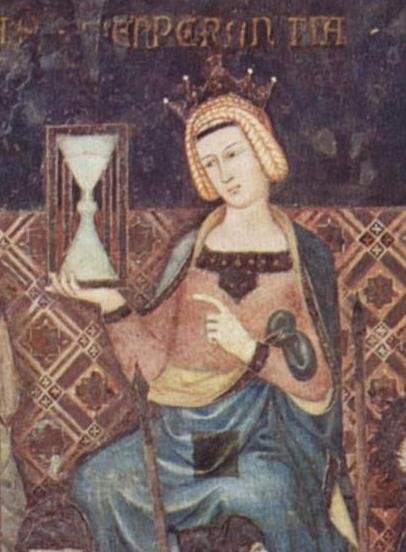
... Time flows and not until its first measure has been completed in full can there be 1 notched into the wood ...
Pu Pakakina was in the domain of the Moon, and therefore the measure from there onwards was no longer days but should be counted in months. In Hora Iti 29 the Sun had reached Spica and the Full Moon was in "February 28 (59 = 2 * 29½).
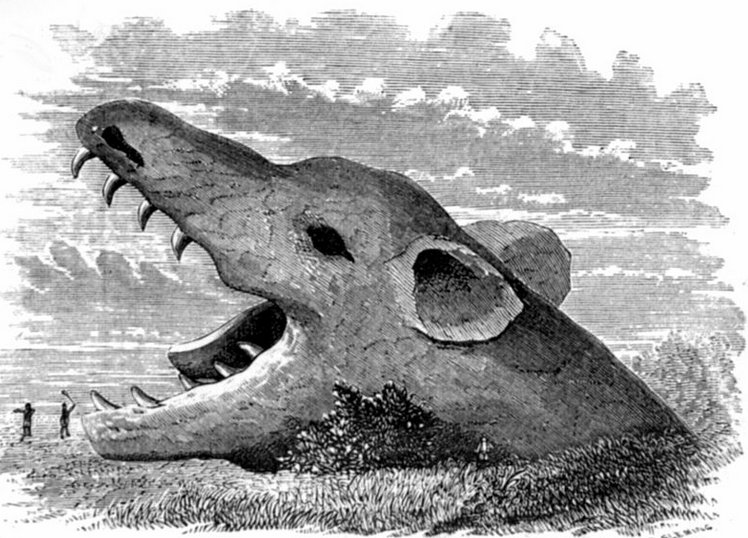
|
























